Pharmacological properties
Pharmacodynamics. The active ingredient of the drug Darsil – silymarin – is obtained from the extract of the fruits of the milk thistle plant Silybum marianum.
Bioactive components of silymarin neutralize free radicals in the liver, prevent the destruction of cellular structures, in particular stabilize hepatocyte membranes. In damaged hepatocytes, they stimulate the synthesis of structural and functional proteins and phospholipids due to specific stimulation of RNA polymerase, prevent the loss of cell components (transaminases), accelerate the regeneration of liver cells. They inhibit the penetration of certain poisons into hepatocytes, in particular poisons of the toadstool mushroom. They significantly reduce the activity of lipid peroxidation in hepatocyte membranes, thereby contributing to their strengthening.
Improve the general condition in patients with liver disease, reduce subjective sensations (weakness, feeling of heaviness in the right hypochondrium). Promote the normalization of biochemical indicators of the functional state of the liver (activity of transaminases, γ-glutamilaminotransferase, LF, bilirubin level).
Pharmacokinetics. After oral administration, silymarin is slowly but not completely absorbed in the digestive tract. It practically does not bind to blood plasma proteins. It is metabolized in the liver by conjugation with the formation of sulfates and glucuronides. It is excreted mainly with bile, in the small intestine it is reabsorbed into the systemic bloodstream, carrying out multiple gradually decaying enterohepatic circulation. T ½ is about 6 hours. It practically does not accumulate in the body.
Indication
Toxic liver damage: for supportive treatment of patients with chronic inflammatory liver diseases or cirrhosis.
Application
Darsil tablets are taken inside after eating, without chewing, drinking enough liquid.
Adults and children over 12 years of age: in cases of mild and moderate severity, the drug is used in a dose of 1-2 tablets 3 times a day; in severe forms of the disease, the dose can be doubled to 2-4 tablets 3 times a day.
The duration of the treatment course is determined by the doctor individually depending on the nature and course of the disease. The average duration of treatment is 3 months.
Contraindication
Hypersensitivity to the active substance or other components of the drug; Acute poisoning of different etiology.
Side effects
The drug is well tolerated. Rarely, in isolated cases and with individual hypersensitivity, the following side effects may occur.
From the nervous system: headache.
From the hearing and maze organs: increased existing vestibular disorders.
Gastrointestinal tract: indigestion, decreased appetite, dyspepsia, heartburn, bloating, flatulence, anorexia, nausea, vomiting, diarrhea.
Respiratory, thoracic and mediastinal disorders: dyspnea.
From the musculoskeletal system: arthralgia.
From the urinary system: increased diuresis.
Immune system disorders: hypersensitivity reactions, including rash, anaphylactic shock, pruritus, alopecia.
The adverse reactions that occur with the use of the drug are transient and disappear after its withdrawal.
Special instructions
Treatment with the drug for liver disease will be effective in diet.
In the case of jaundice, you should consult your doctor for correction of therapy.
The drug is used with caution in patients with hormonal disorders (endometriosis, uterine fibroids, breast, ovarian and uterine carcinoma, prostate carcinoma), due to the possible estrogen-like effect of silymarin. In such cases, patients should consult a doctor.
The drug contains crystalline sugar, which should be taken into account by patients with diabetes.
It is necessary to refrain from drinking alcohol during treatment with the drug.
The drug contains lactose, therefore patients with rare hereditary problems of galactose intolerance, lactase deficiency or glucose-galactose malabsorption should not use the drug.
Use during pregnancy and breastfeeding. Due to the lack of data on safety and efficacy, the drug should not be used during pregnancy and breastfeeding.
Children: The drug is not recommended for use in children under 12 years of age.
Ability to influence the reaction speed when driving vehicles or other mechanisms. The drug does not affect the reaction speed when driving vehicles or other mechanisms, however, in case of any vestibular disorders, one should refrain from driving vehicles or other mechanisms.
Interactions
When using silymarin simultaneously with other drugs, the following interactions are possible:
with oral contraceptives, drugs used in estrogen therapy – reduced effectiveness of the latter;
with antiallergic drugs (fexofenadine), anticoagulants (clopidogrel, warfarin), antipsychotic drugs (alprazolam, diazepam, lorazepam), hypocholesterolemic drugs (lovastatin), some drugs for the treatment of cancer (vinblastine), antifungal drugs (ketoconazole) – increased effectiveness of the latter (due to inhibition of the cytochrome P450 system by silymarin).
Herbal products containing silymarin are widely used as hepatoprotectors in oncology practice simultaneously with cytostatics. Clinical studies show a low risk of possible pharmacokinetic interactions between silymarin as an inhibitor of the CYP 3A4 and UGT1A1 isoenzymes and cytostatics, which are substrates of these enzymes.
Overdose
Cases of overdose have not been established.
In case of accidental ingestion of high doses, induce vomiting, rinse the stomach, take activated charcoal and, if necessary, apply symptomatic treatment prescribed by a doctor.
Storage conditions
In the original packaging at a temperature not exceeding 25 °C.

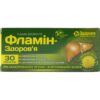
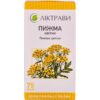



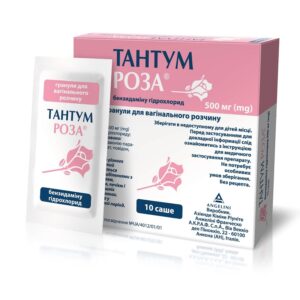
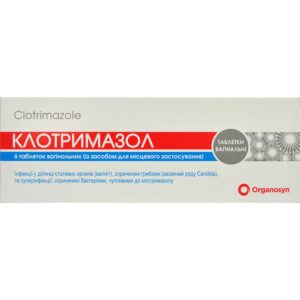
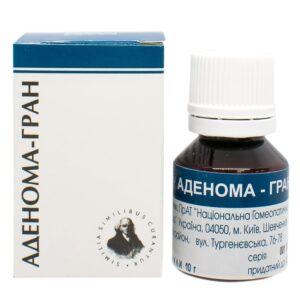
Reviews
There are no reviews yet.